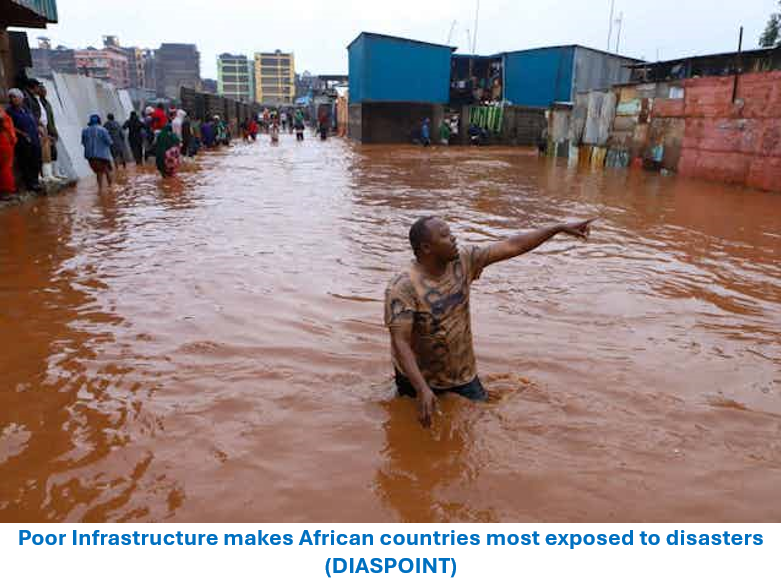Kenya’s devastating floods expose decades of poor urban planning and bad land management
Post By Diaspoint | May 4, 2024

Floods in Kenya killed at least 169 people between March and April 2024. The most catastrophic of these deaths occurred after a flash flood swept through a rural village killing 42 people. Death and destruction have also occurred in the capital, Nairobi, a stark reminder of the persistent failure to keep abreast of the city’s rapid urbanization needs. Sean Avery, who has undertaken numerous flood and drainage studies throughout Africa, unpacks the problems and potential solutions.
Floods are the natural consequence of storm rainfall and have an important ecological role. They inundate flood plains where silts settle, riverbed aquifers are recharged and nutrients are gathered. Annual rainfall in Kenya varies from 2,000 mm in the western region to less than 250 mm in the drylands covering over 80% of Kenya. But storm rainfalls are widespread. This means that floods can occur in any part of the country.
The impact of floods has become more severe due to a number of factors.
The first is how much water runs off. In rural areas, changes to the landscape have meant that there’s been an increase in the amount of storm runoff generated from rainfall. This is because the natural state of the land has been altered through settlement, roads, deforestation, livestock grazing and cultivation. As a result, a greater proportion of rainfall runs off. This runoff is more rapid and erosive, and less water infiltrates to replenish groundwater stores.
The East African Flood Model, a standard drainage design tool, demonstrates that by reducing a forested catchment into a field for livestock pasture, for instance, the peak flood magnitude can increase 20-fold. This form of catchment degradation leads to landslides, dams can breach, and road culverts and irrigation intakes are regularly washed away.
Read More from original source
